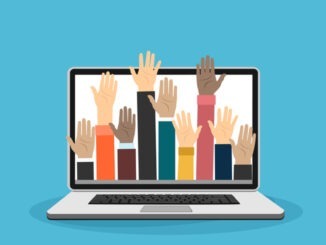
What role can digital inclusion play in making healthcare more accessible for those most likely to be digitally excluded?
CREDIT: This is an edited version of an article that originally appeared on NHS
‘Digital inclusion’ can support local health and care priorities. The term covers:
- Digital skills – being able to use digital devices (such as computers or smart ‘phones and the internet). These are important, but a lack of digital skills is not necessarily the only, or the biggest, barrier that people face.
- Connectivity – access to the internet through broadband, wi-fi and mobile. People need the right infrastructure – but that is only the start.
- Accessibility – services need to be designed to meet all users’ needs, including those dependent on assistive technology to access digital services.
Barriers to digital inclusion
Research for the UK digital strategy suggests that there are a number of important barriers, and more than one may affect individuals at any one time. These are:
- Access – not everyone has the ability to connect to the internet and go online.
- Skills – not everyone has the ability to use the internet and online services.
- Confidence – some people fear online crime, lack trust or don’t know where to start online.
- Motivation – not everyone sees why using the internet could be relevant and helpful.
As access, skills and confidence improve, it is increasingly important to tackle other barriers, including:
- Design – not all digital services and products are accessible and easy to use.
- Awareness – not everyone is aware of the digital services and products available to them.
- Staff capability and capacity – not all health and care staff have the skills and knowledge to recommend digital services and products to patients and service users.
People likely to be digitally excluded
The Government Digital Service has developed a digital inclusion scale which maps individuals’ digital capability on a scale from 1-to-9, from those who don’t use the internet at all, to ‘digital experts’. Some sections of the population are more likely to be digitally excluded than others, for example:
- older people;
- people in lower income groups;
- people without a job;
- people in social housing;
- people with disabilities;
- people with fewer educational qualifications, excluded, or left school before 16;
- people living in rural areas;
- homeless people;
- people whose first language is not English.
For more information on digitally excluded populations in the UK see the annual UK Consumer Digital Indexfrom Lloyds Bank. The 2019 index shows that:
- there are 11.9m people (22% of the population) that do not have the digital skills needed for everyday life in the UK;
- by 2030 it is predicted that 4.5m people (8% of the population) will remain digitally disengaged;
- people with a disability are 35% less likely to have essential digital skills for life.
Assisted digital
Digital inclusion initiatives can help users improve their digital skills so that they can use online services – however, some people will still need assisted digital support such as:
- access through alternative channels (for example, telephone, face-to-face);
- help from others to use online services.
Programmes to empower patient can be found here:
Health literacy
As health information and services are increasingly delivered digitally, the ability to use digital technologies is increasingly a form of health literacy. There is good evidence from the World Health Organization that people with lower health literacy have worse health outcomes.
Read more about health literacy in the NHS digital service manual and in the Health Education England health literacy toolkit.


Be the first to comment